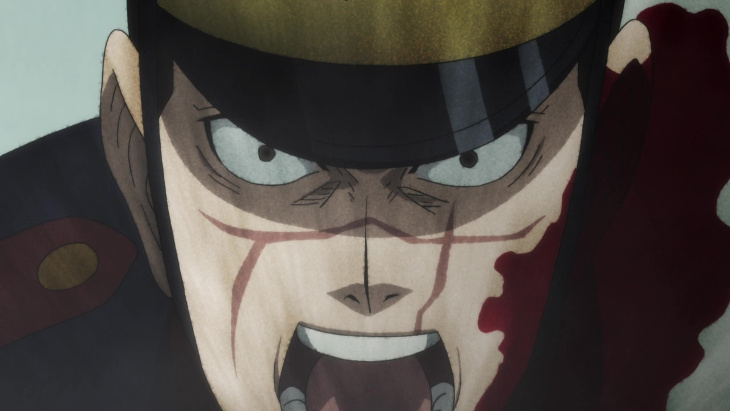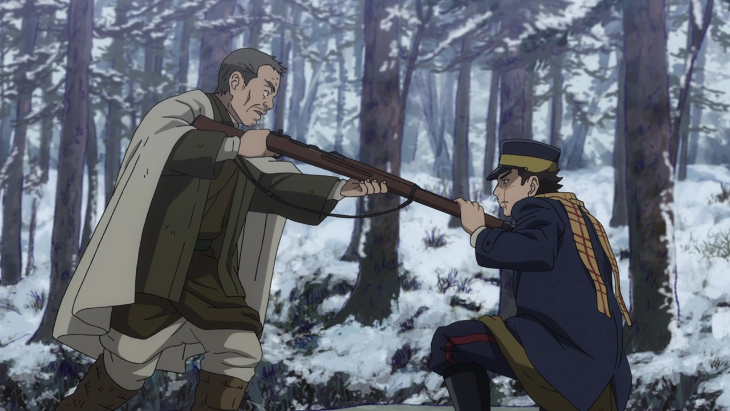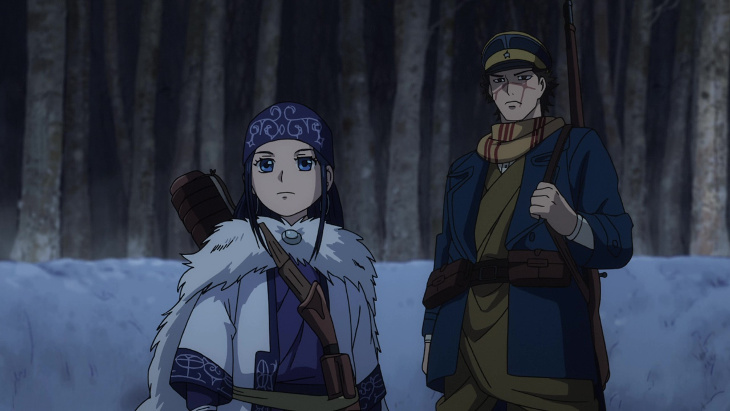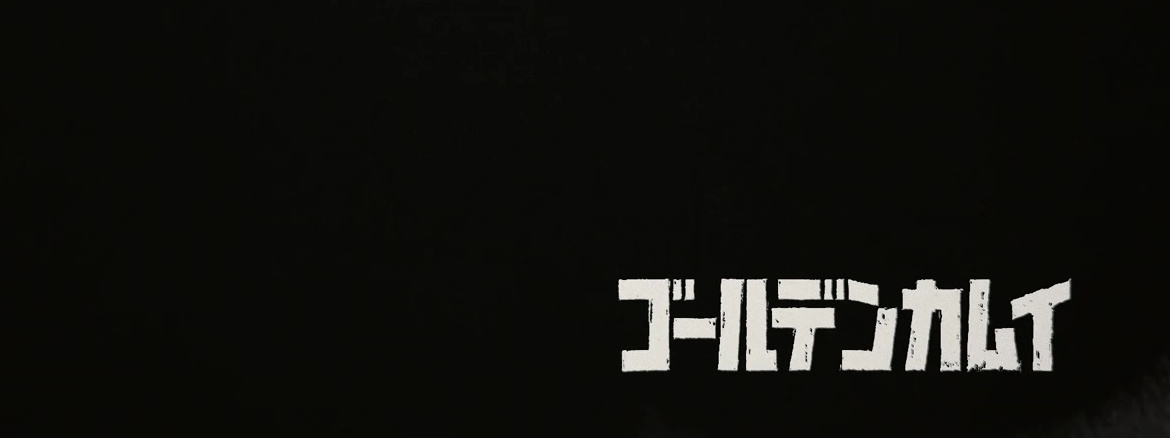
It has been too long since I have done one of these. I have meant to get back into writing these and this show is so up my alley I find it difficult to imagine a more perfect show to return on. I am stating my affinity for this up front so that you will understand how much I like Golden Kamuy in spite of a few potential glaring problems. It is a fun adventure show with a more interesting setting and group of characters than your typical entry in the genre.
The story takes place at the tale end of the Meiji era in Japan (1868-1912) in Hokkaido, the large northern island of Japan. Our main character, Sugimoto Saichi, is a former Japanese Imperial soldier who left after surviving the bloodstained battlefields at the Siege of Port Arthur (April 4, 1904-January 5, 1905) during the Russo-Japanese War. He should have been considered a war hero for his bravery and kill count if not for his wildly violent behavior and assault of a superior officer. As such, he is a penniless vet panning for gold in Hokkaido. While there, an old drunk tells him a story about a massive amount of gold which was stolen from the Ainu (the native peoples of the Japanese islands) during their war with the Japanese government. The man who stole it hid the gold before he was thrown into prison. While there, he tattooed parts of the map onto the bodies of his most loyal subordinates and promised then a chunk of the treasure if they escape. Saichi, desperate for money to help take care of a dead war buddy’s family, begins to seek the treasure when he discovers the story might be more factual than first believed.
That plot synopsis leaves a few things out which I will go into in more detail later, but part of the fun of this first episode was the execution of this initial setup. From the revelation of the main character’s past to the laying out of the legend that could lead to great treasure, all the story beats are going to be familiar to anyone who has watched an old school treasure hunt adventure movie or TV series. Intrigue is built. Dangers are encountered and fought. Alliances are formed. All of it is standard stuff for the start of an adventure story. So what makes this particular story so compelling?

For starters, its setting and time period are fairly unique. While the Meiji period has been handled before in anime (see Rurouni Kenshin for the most famous example) there has not been much discussion of Hokkaido and more specifically of the Ainu, the Japanese equivalent of American Indians in North America (with equally inhumane treatment). A story about the remnants of Japan’s native culture trying to survive in the frozen forests and mountains of Hokkaido is a fascinating and unique idea. In addition, while Japanese Imperial soldiers have been discussed dozens of times, a broader awareness of Japan’s political machinations immediately prior to World War I is also a fairly rare occurrence in Japanese fiction, even though it is widely called The Great War in Japan (with a far less negative subtext). This combination of factors makes the show particularly interesting for a history buff like myself, but it should also be interesting to anyone with a predilection for Old West stories featuring outlaws and natives and frontier justice. Great stuff.
The show’s biggest advantage is how well its two main characters compliment one another. I didn’t mention this in the introduction, but the other major character is a young Ainu woman named Asirpa. She is a skilled hunter, has a pet wolf (which are supposed to be extinct in the story), and her father was apparently one of the Ainu men slaughtered for the gold by the Japanese criminals. She makes a great foil to Saichi with her emphasis on skill, caution, and precision which contrasts his emphasis on tenacity, brute strength, and luck. Furthermore, their personalities complement each other well. She seeks revenge but refuses to do anything to violate the code of her people (kill people, eat animals that have killed people, etc.). Saichi just needs the money to keep a promise to a dead friend and is willing to kill anyone he needs to, understanding on some deep personal level that he has already sinned too much to ever be saved anyway. The two characters also contrast each other in design. Saichi’s modern Imperial Western uniform contrasts with Asirpa’s traditional, naturalist native attire even though they use similar color patterns. You see how well they work together when they cooperate to kill a mad bear wandering the forests that tries to eat their treasure map while it is still on the person.
Speaking of that bear, that part of the episode is a good demonstration of the two major problems with this show. One is a potential problem and the other is an actual, immediate problem. The potential problem is something that I was warned about by people who have read the manga: an overabundance of dialogue. While, at the moment, it is not nearly as bad as I have heard, I am already seeing the telltale signs of a windbag writer. Putting aside the constant expository dialogue, the Ainu girl in particular constantly uses Ainu terms and then must explain Ainu culture, terminology, and history to the Japanese man. If this trend is going to persist and get more pronounced as the story goes on (I have been warned it will), then that could quickly become grating.

The bigger problem at this point, like with many shows recently, is poorly integrated CG. I have resigned myself to the fact that there is going to be CG in anime. It saves time and money and there can be some creative things done with it (see Land of the Lustrous), but what I still hate is when bad CGI is integrated with traditional 2-D animation. The mad bear is completely CG but the characters are not. Thus, we inevitably get that uncanny valley effect where two noticeably different types of animation attempt to interact and the result is just jarring. Furthermore, the bear’s CG is not all that well designed. The creature is so big that often takes up the entire frame of the shot and the CG fur and shadows on the brown bear are so dark with absolutely no light contrasts that I feel like I am just looking at CG mud on screen. To further compound the failures of computer imagery, the wolf I mentioned earlier is traditionally animated except when it is fighting the bear, where it switches to another poor CG model. I know CG is everywhere, but can’t it be done slightly better than this?
The bad CG is a shame since most of the traditional animation is rather impressive. This series is being adapted by Geno Studio, who have not worked on much aside from last season’s sleeper hit, Kokkoku, (read Kora’s initial impressions of that show here). Based upon that show and the artistic direction and animation for this show, they are not a bad studio at all. You see great detail in faces and expressions as well as the more violent scenes like skinning people or gutting animals that helps immerse you in the show’s tone. It’s a shame that the series well staged and enthralling fight scenes are currently being hamstrung by bad CG. Hopefully it will not persist.




Add comment